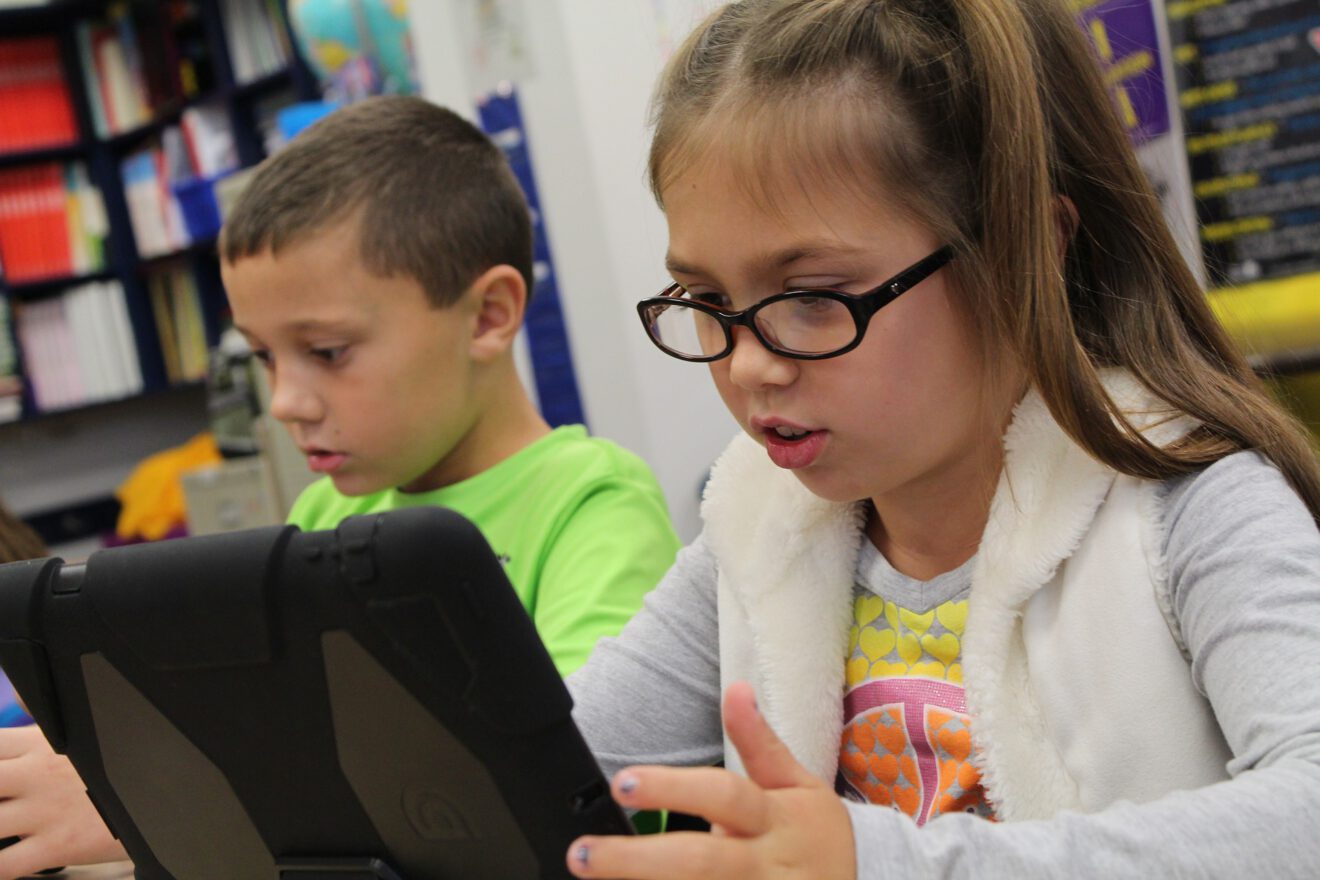As a teacher with over 23 years in the field, I’ve been able to witness firsthand the evolution of technology entering the classroom and expanding what we teach and how we teach it. Inspired by this shift, I’ve spent the last 14 years in education technology. I work with nearly 1,150 K-5th grade students in the #WESiPadLab that I created.
I understood early on the vital role technology would come to play in education. In 2004 I became the first Microsoft teacher and certified computer lab teacher in my district, and spearheaded the initiative for a computer lab in our school, a rare thing for a Title 1 elementary school.
Eventually I noticed the growing gap between students who had access to technology, and those who didn’t understand smart technology or know how to work an iPad. To address this problem, I launched Georgia’s first iPad lab four years ago. I created the iPad Lab to have a “Starbucks” feel, with flexible seating and a communal vibe, far more preferred to the computer lab environments where students work in isolation. Since the iPad lab’s launch in 2014, four other schools in our district have implemented a similar lab, with more to come next year.
Today, students attend lab once a week. I set aside the last ten minutes every week for reading. Through Epic!, a kids digital media platform, I’m able to provide over 25,000 high quality books that students can use to discover content and explore topics that interest them. However, over the years I’ve noticed that my most reluctant young readers or those with special needs, beg me to skip independent reading and prefer to code.
Upon further investigation I came across an NPR article that highlighted research supporting my theory that teaching coding at a young age can help prepare children to learn how to read.
Learning to read requires developing sequencing skills, forming words with letters, forming sentences with words, all in the proper order. This is exactly the skill set which is developed through coding. An efficacy study by codeSpark and research firm KnowProgress found that after just three sessions with codeSpark Academy, a computer science platform for elementary-age students, learners score 22% higher on sequencing tests. Skills with sequencing have a direct and positive correlation with improved math and reading scores.
I’ve seen the positive impact come to life in my iPad Lounge with my young students who love playing The Foos, a codeSpark game with silly characters that centers around repetition. Students have to make the same motions with the character before they can move on to the next level. While the students view it as game playing, telling the character to go to the right multiple times, and then jump, they are actually learning pattern forming, sequencing, and the importance of order–skills that will make them better readers.
If you’re also struggling with inspiring emergent readers, here are a few more tips on how you can use coding in the classroom:
Look for apps that are picture based. The reason why so many young students gravitate towards The Foos is that you don’t need to know how to read in order to play the games; students can build and learn at their own pace. They are empowered to play the puzzles and games on their own, without teacher support to help them read words. Plus, students are entertained and engaged with silly characters, like Glitch and Ninja Foo, in the same way that students are drawn to books with characters they like.
Teachers need to play too. It is also important for educators to actually play the apps that they are using in the classroom, in order to best determine which ones will work with their students. I’ve also found that researched-backed apps tend to help me eliminate the hours of sorting through apps to find the best ones.
First consume, then create. Much like reading and writing go hand in hand, encourage your students to ‘show what they know’ once they’ve got the basics of block programming down. Encourage your students to create games, or other products in the same way we encourage early readers to write. For example, free apps for elementary school teaches like codeSpark, Scratch and Hopscotch graduate students to new levels and a community where they can make games.
When it comes to early education, the importance of teaching students how to read is clear. However, reluctant readers or those with special needs may gravitate more towards coding. Encourage this. The skills needed to code are the very same skills needed to improve reading skills. Learning how to code should be an opportunity made available to all emerging readers.
Kristen Brooks is a K-5 iPad lab teacher at Cherokee County School District in Atlanta, Ga. She is an Apple Distinguished Educator and PBS Digital Innovator. Find out more at www.kristenbrooks.net
Tech Tips is a weekly column in SmartBrief on EdTech. Have a tech tip to share? Contact us at [email protected]
____________________________________
Like this article? Sign up for SmartBrief on EdTech to get news like this in your inbox, or check out all of SmartBrief’s education newsletters, covering career and technical education, educational leadership, math education and more.
